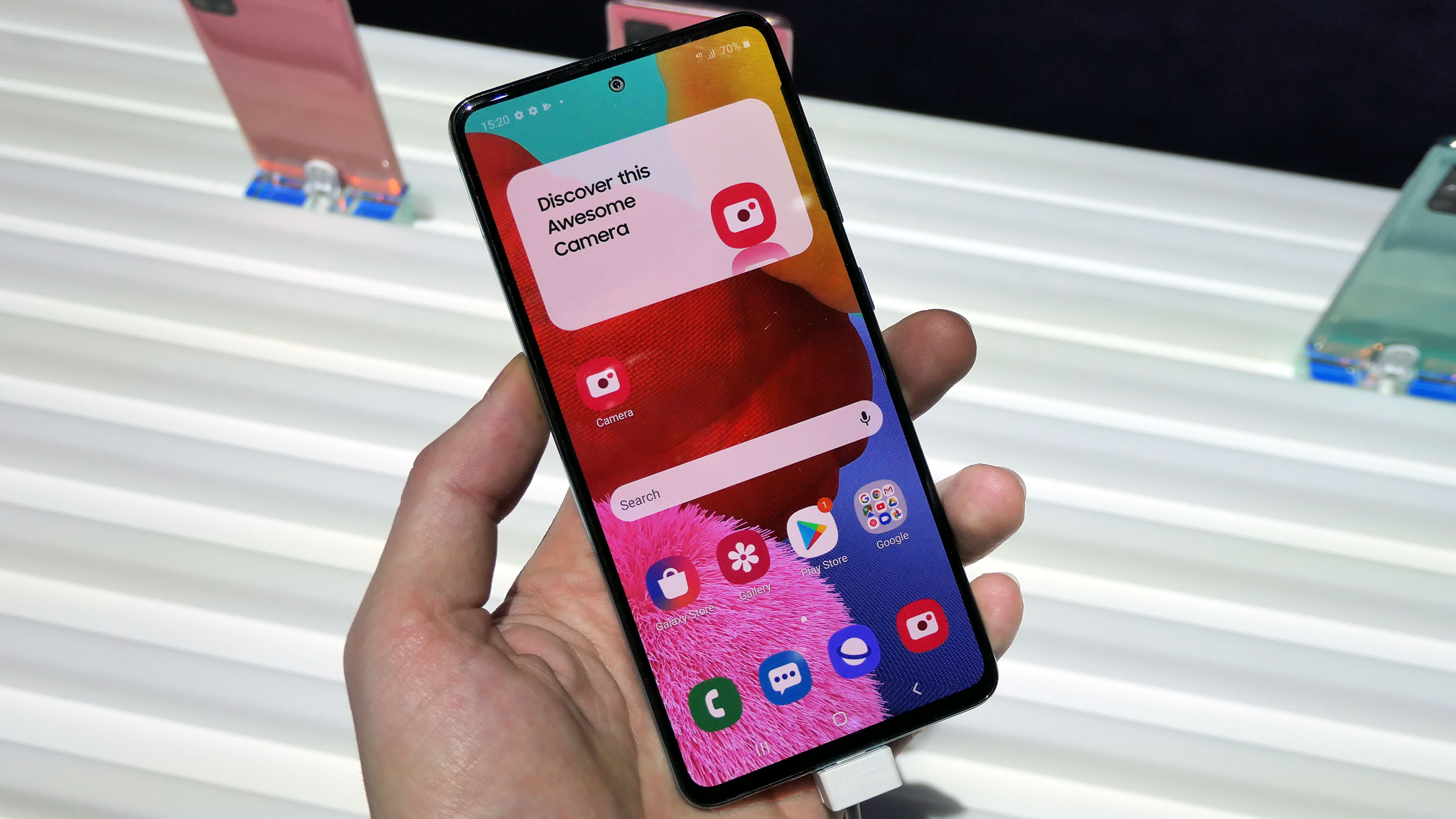Samsung Galaxy A51 and A01 launch in the US today starting at $109
The Galaxy A51, Galaxy A21 and other affordable phones are headed to the US

US consumers seeking affordable options among the best Samsung phones haven’t had many choices – until now, as the brand announced the Samsung Galaxy A51 and A01 starting today at $109, with other A-series phones to follow this summer.
The budget-priced Galaxy A01 and Galaxy A51 reach the US first. Beginning today, Thursday, April 9, consumers can pick up the A51 with triple rear cameras, including a 48MP main shooter along with ultra-wide and macro lenses.
Its 6.5-inch AMOLED display with punch-hole and 4,000mAh battery mark this as a less refined but still powerful version of its flagship Samsung Galaxy S20 line of phones – but starting at a much more affordable $399.
The Galaxy A01, much lower-priced starting at $109, features a 5.7-inch display and two rear lenses: a 13MP main camera and 2MP depth sensor. Combined with a 3,000mAh battery and 16GB of storage (expandable up to 512GB via microSD) and 2GB of RAM, it’s a true budget option.
The remaining phones in the A series will come later in the summer (Q2 and Q3 2020). These will include the Galaxy A11 and Galaxy A21 starting at $179 and $249, respectively, as well as the Galaxy A51 5G ($499) and larger Galaxy A71 5G ($599). More details, including spec and camera breakdowns, can be found on Samsung's blog post.
- Samsung Galaxy A51: our hands-on with the phone
- Best budget phones: what the A51 and others will be competing against
- Best Android phones: where the A51 could end up
Samsung’s budget US invasion
These affordable phones will likely find a more receptive consumer base than they typically would as folks limit their spending during the coronavirus outbreak.
But the A51 and its siblings also represent a strategy shift for Samsung. Previously, we the US had seen a budget Samsung smartphone here or there offered by carriers, but this seems like a more expansive plan.
Sign up for breaking news, reviews, opinion, top tech deals, and more.
Plus, it likely explains why we didn’t see the Samsung Galaxy S10 Lite or Samsung Galaxy Note 10 Lite – both exciting budget flagships demoed at CES 2020 – launch in the US, as they could have overlapped price and feature points with the A-series.
Whether or not the A51 and its ilk were intended to reach the US, they’ll offer good specs at decent prices, which could rival the rumored iPhone 9 and Google Pixel 4a before those heavyweights seem poised to launch. But Samsung's phones will have a distinct advantage: we already know the A51 5G and A71 5G will be able to connect to 5G networks.
- 5G phones: all the phones we know will connect to the next-gen networks

David is now a mobile reporter at Cnet. Formerly Mobile Editor, US for TechRadar, he covered phones, tablets, and wearables. He still thinks the iPhone 4 is the best-looking smartphone ever made. He's most interested in technology, gaming and culture – and where they overlap and change our lives. His current beat explores how our on-the-go existence is affected by new gadgets, carrier coverage expansions, and corporate strategy shifts.